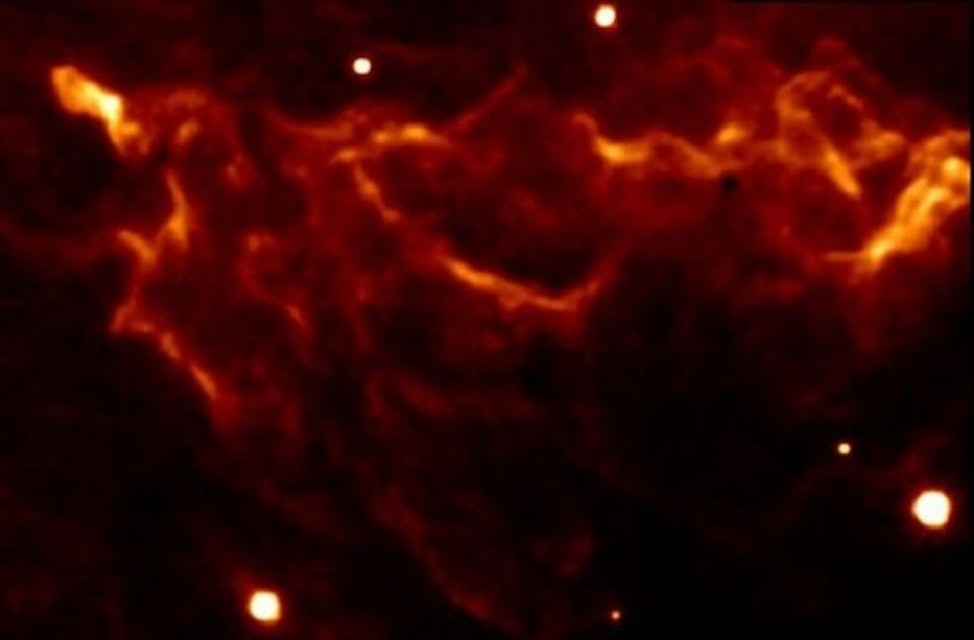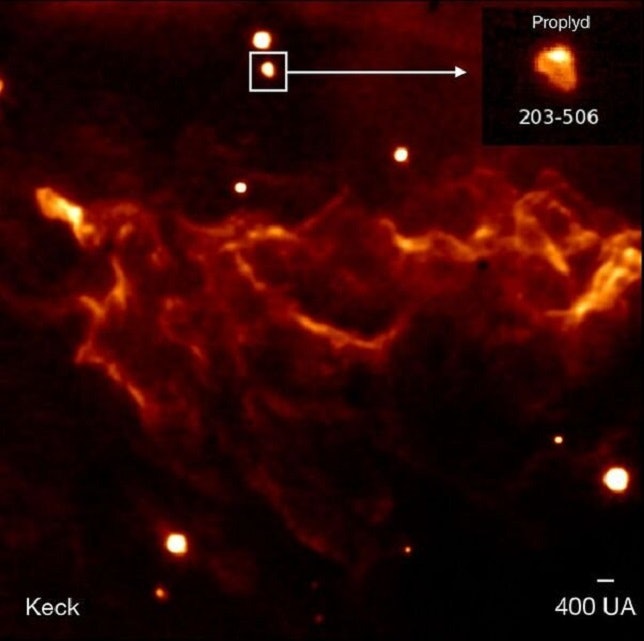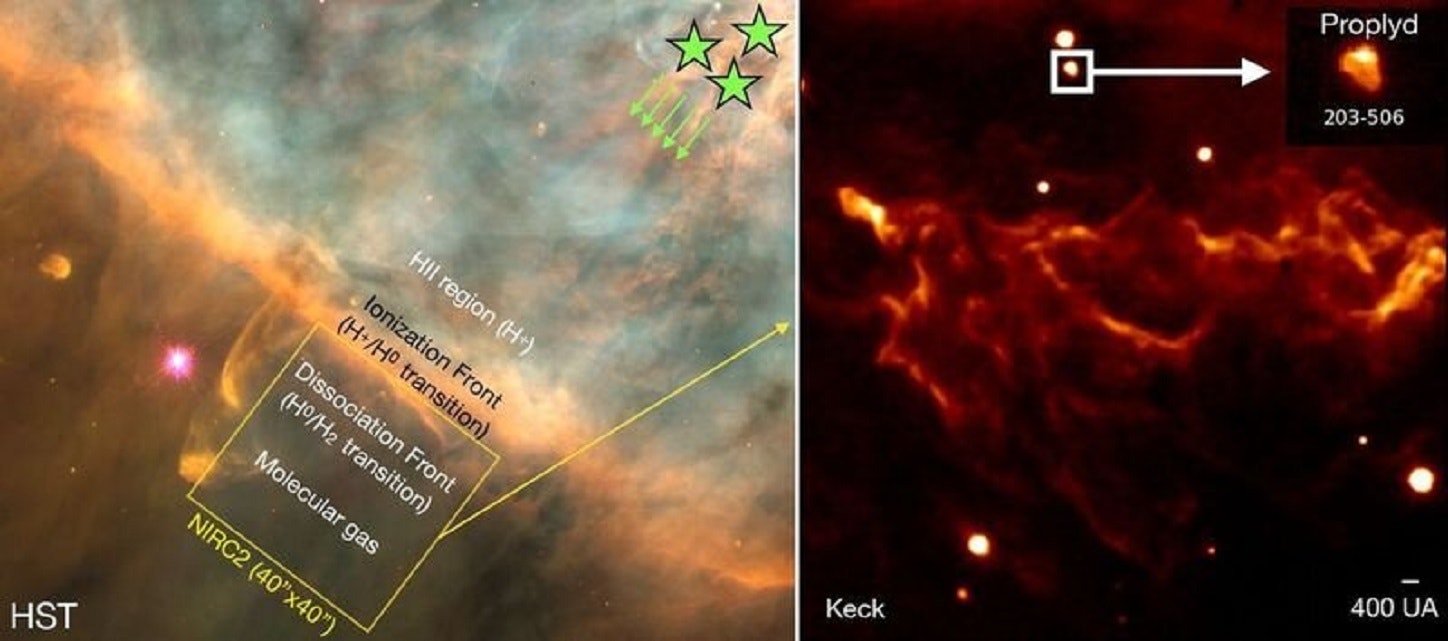
From a mountaintop in Hawai’i, astronomers gave us the best view yet of a strange, fascinating piece of the Orion Nebula.
Deep in the heart of the iconic nebula, in a region called the Orion Bar, blasts of ultraviolet radiation from bright, monstrously huge newborn stars bombard a dense patch of interstellar gas. Most of the gas in the universe is ionized — stellar radiation has stripped its atoms of an electron, leaving it with a positive electrical charge. But in regions like this one, called Photo-Dissociation Regions, the gas is dense enough and cold enough to withstand the powerful stellar winds and hold onto its electrons. It’s a rare neutral zone, even if it’s heavily irradiated.
And astronomers at the W.M. Keck Observatory in Hawai’i just released the most detailed infrared image ever of Orion’s radiation-blasted neutral zone.

Into the neutral zone — If you know what to look for (and have the right instruments to look with), the boundary of the neutral zone is clear. On one side of the boundary, powerful ultraviolet radiation has stripped hydrogen atoms of their electrons, leaving a cloud of ionized hydrogen. But as you approach the photo-dissociation region, the gas gets a little denser, and more of the hydrogen atoms manage to hang onto their electrons.
And just across the boundary (or dissociation front, as physicists call it), the gas is even more densely packed. Here, more and more of those hydrogen atoms have paired off with other hydrogen atoms to form hydrogen molecules: two protons, two electrons, and incredible stability in the face of relentless stellar winds.

Like looking into our past — Studying this dense, neutral, ultraviolet-heated region could tell us something about our own origins. The Orion Nebula, just 1,350 light years away, is the closest major star-forming region to Earth, and it’s also very similar to the vast interstellar gas cloud that probably spawned our own solar system 4.5 billion years ago.
“Observing photo-dissociation regions is like looking into our past," says astrophysicist Emilie Habart of Paris-Saclay University, lead author on the recent study, in a statement. "These regions are important because they allow us to understand how young stars influence the gas and dust cloud they are born in, particularly sites where stars, like the Sun, form.”
The Keck Observatory image, and the data behind it, are laying the groundwork for even more detailed observations with the James Webb Space Telescope in the near future — part of a program called PDRs4All, whose goal is today photo-dissociation regions in star-forming nebulae like Orion.
Because the Orion Nebula is so close, you can see it with your own eyes; it’s the slightly blurry object in the middle of Orion’s “sword,” which hangs below the constellation’s iconic three-star belt. With the unaided eye, the nebula looks like a single star, albeit maybe slightly blurry.







